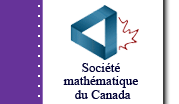Nous avons trouvé 92 articles correspondant à votre recherche.
 |
 |
 |
 |
 |
 |
|
|
| |

The atlatl and dart, the predecessor to the bow and arrow, was very important in the lives of Aboriginals in Saskatchewan and all over the world up until about 2000 years ago. Experiment based lessons allow students to learn about the science behind the weapon system that put humans on top of the food chain. Subject integrated lessons for grades 4-12 in the areas of math, science and social studies based on Saskatchewan curriculum objectives.
|
AUTEUR(S): Janice Cotcher

|
 |
|
|
| |

This teacher has used information from cars in the school parking lot as an easily accessible resource from which to collect and process data.
|
AUTEUR(S): Suzie Ashton

|
 |
|
|
| |

A summary of a case study conducted in a grade nine classroom. Included is one problem and the responses by four students.
|
AUTEUR(S): Erv Henderson

|
 |
|
|
| |

Choose a few survey questions, find the mode of their results and then write a description of the typical or "modal" student in your class!
|
AUTEUR(S): CensusAtSchool - UK

|
 |
|
|
| |

This is an article in the eighth edition of Ideas and Resources for Teachers of Mathematics, a newsletter published by the Saskatchewan Mathematics Teachers' Society. The topic of the eighth edition of the newsletter is "Real World Problem Solving" and in this article Erv outlines an assignment which involves interviws in the community as a way to increase a student's understanding of how mathematics is applied in the real world.
|
AUTEUR(S): Erv Henderson

|
 |
|
|
| |

This one of the articles in the fifth edition of Ideas and Resources for Teachers of Mathematics, a newsletter published by the Saskatchewan Mathematics Teachers' Society. The topic of the fifth edition of the newsletter is data management and this article is a description of personal surveys Erv's grade nine class performed and various methods they used to present and display the data they collected.
|
AUTEUR(S): Erv Henderson

|
 |
|
|
| |

A collection of data management resources compiled by students in a senior education mathematics class taught by Vi Maeers at the University of Regina.
|
AUTEUR(S): Kelly Couse, Delphine Delorme, Regan Gunningham, Laura Shadbolt, Brett P...

|
 |
|
|
| |

A personal project developed to create enrichment activities for Geoboards, Napier Rods, and Bean Sticks. Includes annotated links to problem solving Internet Sites.
|
AUTEUR(S): Brett Paddock

|
 |
|
|
| |

Calculating the area of a rectangles, circles, triangles etc.has been been a regular exercise for students of mathematics. Unfortunately much of the world is irregular in shape and design. This exercise introduces the students to estimating the area of irregular surfaces.
|
AUTEUR(S): Bruce Hermsmeier

|
 |
|
|
| |

A collection of problems created by 28 students in a Mathematics Education class at the University of Regina
|
AUTEUR(S): Vi Maeers, Shirley Bourhis, Kevin Butz, Gisele Carlson, Niki Clifford, K...

|
 |
|
|
| |

In this article Judi and Harley illustrate the seven frieze patterns using art of the indigenous peoples of North America. They then develope some of the mathematics of frieze patterns at a level that is accessible to many students. The teacher notes contain activities with frieze patterns for students at all levels.
|
AUTEUR(S): Judi McDonald and Harley Weston

|
 |
|
|
| |

This article is part of the Mathematics Notes series at Washington State University. In the article, Judi and Harley start by determining the functions that map the plane back onto itself, while at the same time, mapping a specified line back onto itself and preserving the size and shape of any objects represented in the plane. These are the functions that preserve frieze patterns. The authors then look at the algebraic structure of this collection of functions under the operation of composition, show that there are only seven frieze groups, and illustrate how they are generated. Each frieze group is represented algebraically and geometrically. The article concludes with a tour of the Washington State University campus, looking at the ways in which frieze groups are exhibited and used in our immediate surroundings.
|
AUTEUR(S): Judith J. McDonald and J. Harley Weston

|
 |
|
|
| |

This is a collection of Aboriginal games that teachers can use to integrate culture into Mathematics lessons. The mathematical content includes patterns and relations, probability, data management, numbers and operations, problem solving, critical thinking, and geometry. Students will have fun with the games while they apply their mathematical knowledge.
|
AUTEUR(S): Compiled by Karen Arnason, Mhairi(Vi) Maeers, Judith McDonald and Harley...

|
 |
|
|
| |

Larry designed this kit as a project in a mathematics methods class. In it he describes ten activities that result in the construction of a garden shed. The project is geared to students in grades 8 and 9. In constructing the shed students are required to perform geometric measurements, calculate/estimate materials and costs, understand scale in the reading of blueprints and perform many problem solving activities.
|
AUTEUR(S): Larry Penner

|
 |
|
|
| |

A collection of activities which deal with geometry concepts. Debbie has gathered these activities from various sources and used them in her middle years classroom.
|
AUTEUR(S): Debbie Penner

|

